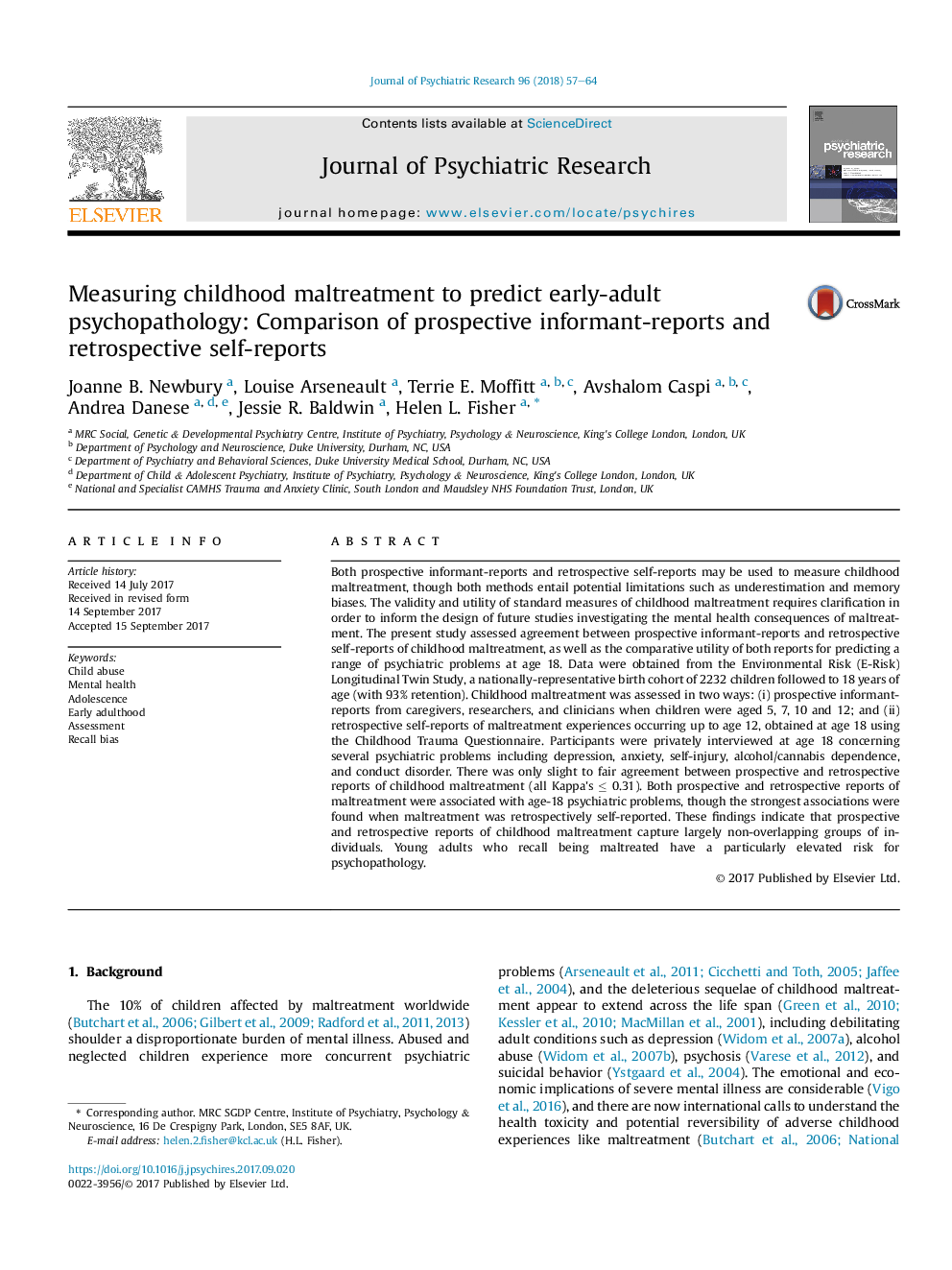| کد مقاله | کد نشریه | سال انتشار | مقاله انگلیسی | نسخه تمام متن |
|---|---|---|---|---|
| 4931896 | 1433297 | 2018 | 8 صفحه PDF | دانلود رایگان |
Both prospective informant-reports and retrospective self-reports may be used to measure childhood maltreatment, though both methods entail potential limitations such as underestimation and memory biases. The validity and utility of standard measures of childhood maltreatment requires clarification in order to inform the design of future studies investigating the mental health consequences of maltreatment. The present study assessed agreement between prospective informant-reports and retrospective self-reports of childhood maltreatment, as well as the comparative utility of both reports for predicting a range of psychiatric problems at age 18. Data were obtained from the Environmental Risk (E-Risk) Longitudinal Twin Study, a nationally-representative birth cohort of 2232 children followed to 18 years of age (with 93% retention). Childhood maltreatment was assessed in two ways: (i) prospective informant-reports from caregivers, researchers, and clinicians when children were aged 5, 7, 10 and 12; and (ii) retrospective self-reports of maltreatment experiences occurring up to age 12, obtained at age 18 using the Childhood Trauma Questionnaire. Participants were privately interviewed at age 18 concerning several psychiatric problems including depression, anxiety, self-injury, alcohol/cannabis dependence, and conduct disorder. There was only slight to fair agreement between prospective and retrospective reports of childhood maltreatment (all Kappa's â¤Â 0.31). Both prospective and retrospective reports of maltreatment were associated with age-18 psychiatric problems, though the strongest associations were found when maltreatment was retrospectively self-reported. These findings indicate that prospective and retrospective reports of childhood maltreatment capture largely non-overlapping groups of individuals. Young adults who recall being maltreated have a particularly elevated risk for psychopathology.
Journal: Journal of Psychiatric Research - Volume 96, January 2018, Pages 57-64
